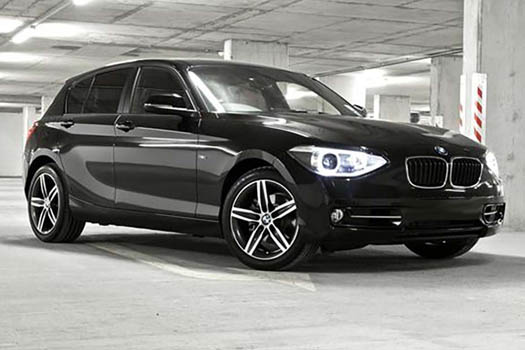

If there is a more ironic automotive juxtaposition, test takers simply can’t conceive of it on this day. They’re honing the heck out of the 2011 BWM 135i Coupe on one of the sleepiest back roads that explain Ohio’s Amish country. If there is somewhere the silly-fast and smart technology-laden smallest BMW truly doesn’t belong, it’s here where life remains knowingly simple, sober — and slow.
The BMW 135i Coupe of 2011 is none of those. It’s excellent BMW 3.0-liter engine inline-6 now has direct fine fuel injection and a new dual-stage turbocharger to grasp the place of the twin turbo that aspirated the former iteration of the BMW six-cylinder, but that is only the start. The 2011 model year marks the very first time the 135i Coupe receives BMW’s mostly magnificent dual-clutch transmission (DCT) and the automated manual that does the clutching mainly for you and permits sequential up- and downshifting all through the seven tensely packed ratios.
The whole 1 Series is BMW’s smallest car (don’t count Mini), therefore, the 300 horsepower from the redesigned engine makes it really muscle-car mighty, while the accessibility of the slick, seven-speed DCT and its swift-as-a-blink gearshifts adds a new feature for those who’d somewhat not deal with a clutch pedal.
The 2011 BMW 135i is definitely not as whippet-light as you might desire from a car that’s almost 8 inches shorter than a 3 Series BMW, but the turbocharged inline-6 nonetheless produces the kind of slap-in-the-face acceleration and nonchalant velocity that create the 135i as much a premium muscle vehicle as the powerful V8-toting M3 — not much slower, either. And it’s almost $24,000 cheaper.
BMW’s numbers declare the 2011 – 135i Coupe along with the DCT hammers to 60 mph in only 5.0 seconds, one-tenth quicker than if one was using the conventional six-speed manual (non-automatic). Curiously, even 7th gear is really not an overdrive ratio, so the DCT gives up easily 2 mpg on the EPA city cycle and perhaps 3 mpg on the highway cycle to the manual-transmission version of this particular car.
Still, the combination’s 18 mpg city/25 mpg highway is good enough for a car with such blunt performance. Test takers back out of their driveway onto a fairly steep gradient and the maneuver underscores the only actual foible with the DCT. That is, the 135i’s gearbox doesn’t transition smoothly or loyally from reverse to forward in this situation. The outstanding engine has a broad-shouldered torque delivery that easily covers the DCT’s deliberate shifts in complete automatic mode, but those can be hurried and sharpened only by depressing the “Sport” button present on the center console that calls up more agile shift and throttle mapping.
The DCT is relatively dear as optional transmissions move — automatic or otherwise — at $1,575, but the output is nothing short of remarkable, while those who face a lot of traffic congestion certainly will consider the DCT an almost no-compromise godsend.
Firstly, the BMW 1 Series is the lowest-cost entrance point to the BMW nameplate, the most economical way to buy into the family if one has decided it’s time to try the brand. But the New 1 Series — and particularly the 2011 BMW 135i — should be purchased first and foremost by those searching for arguably the most unfiltered BMW riding experience.
At its base MSRP, the 135i’s performance is realistically unchallenged. Domestic muscle cars do it, but seriously, they have nothing like the 135i’s build quality or interior robustness. So, it’s a clever choice.